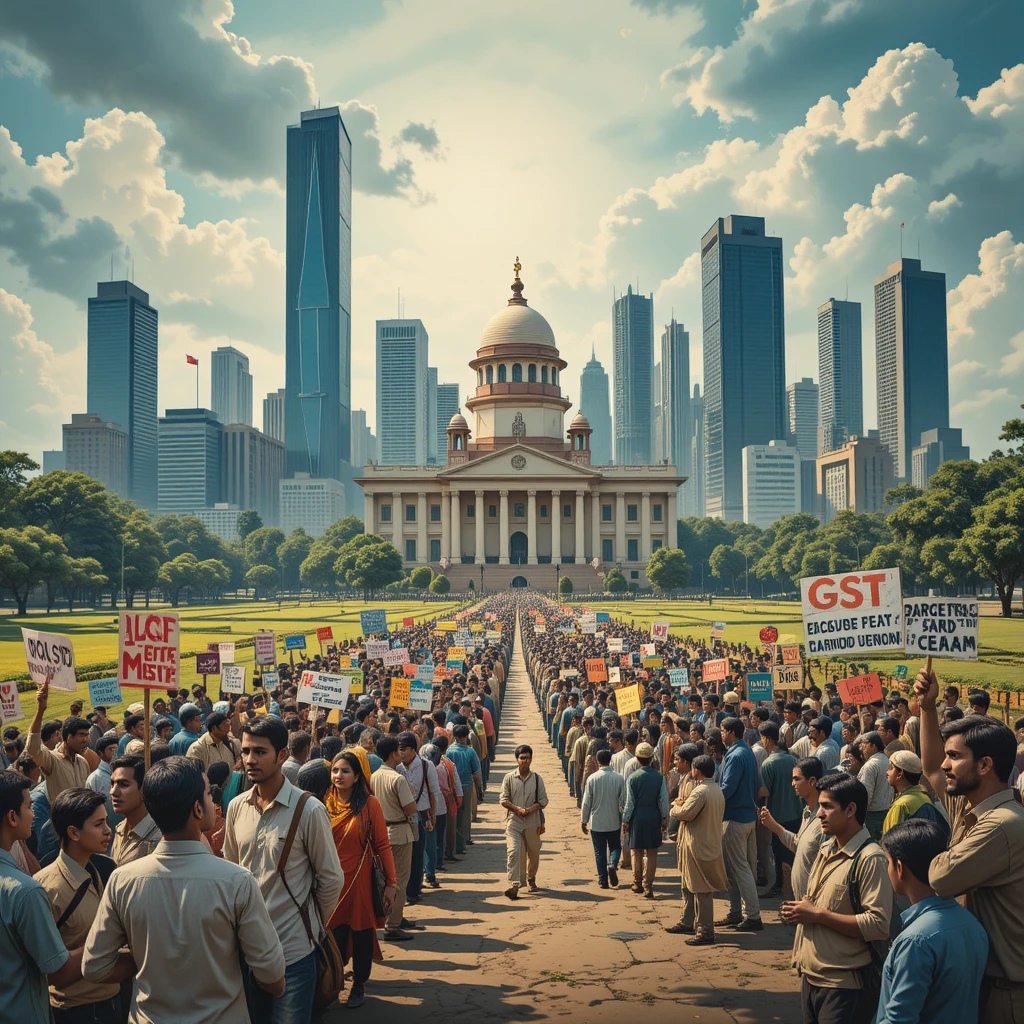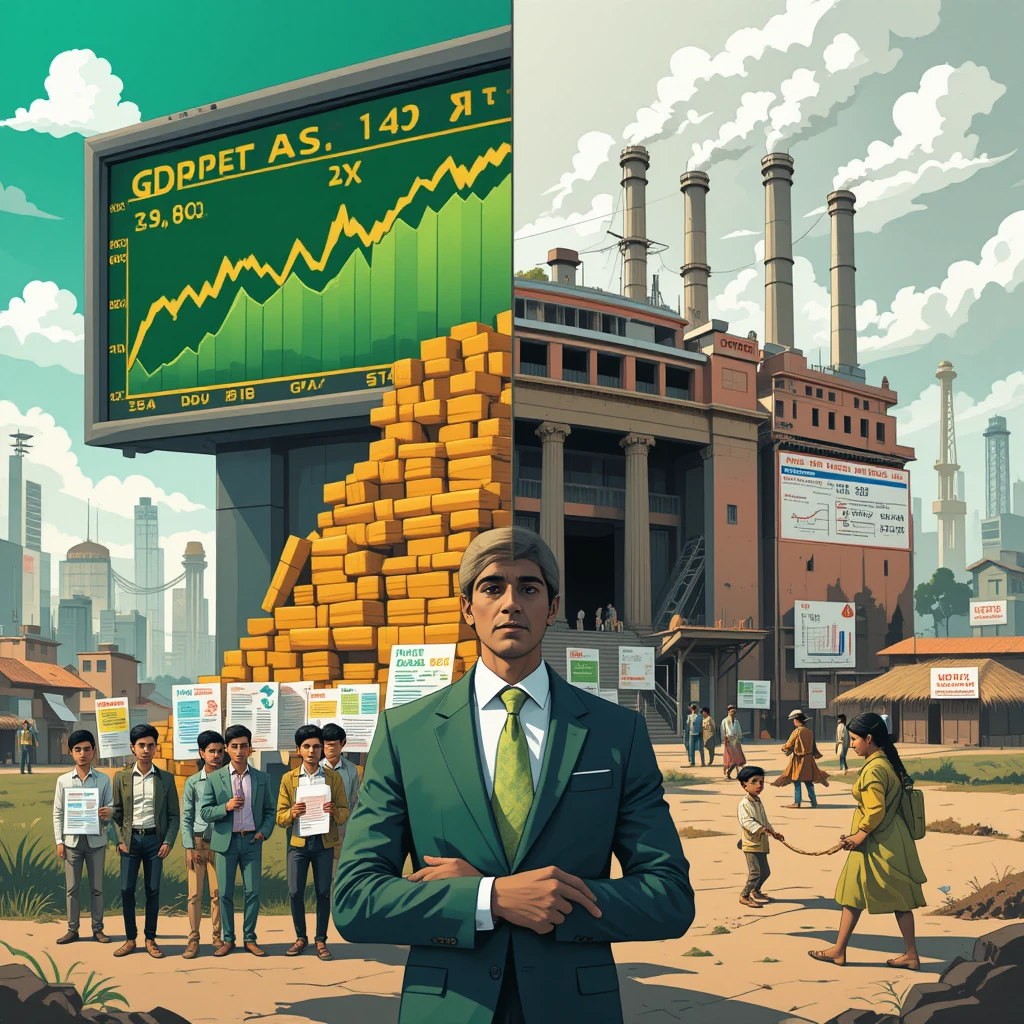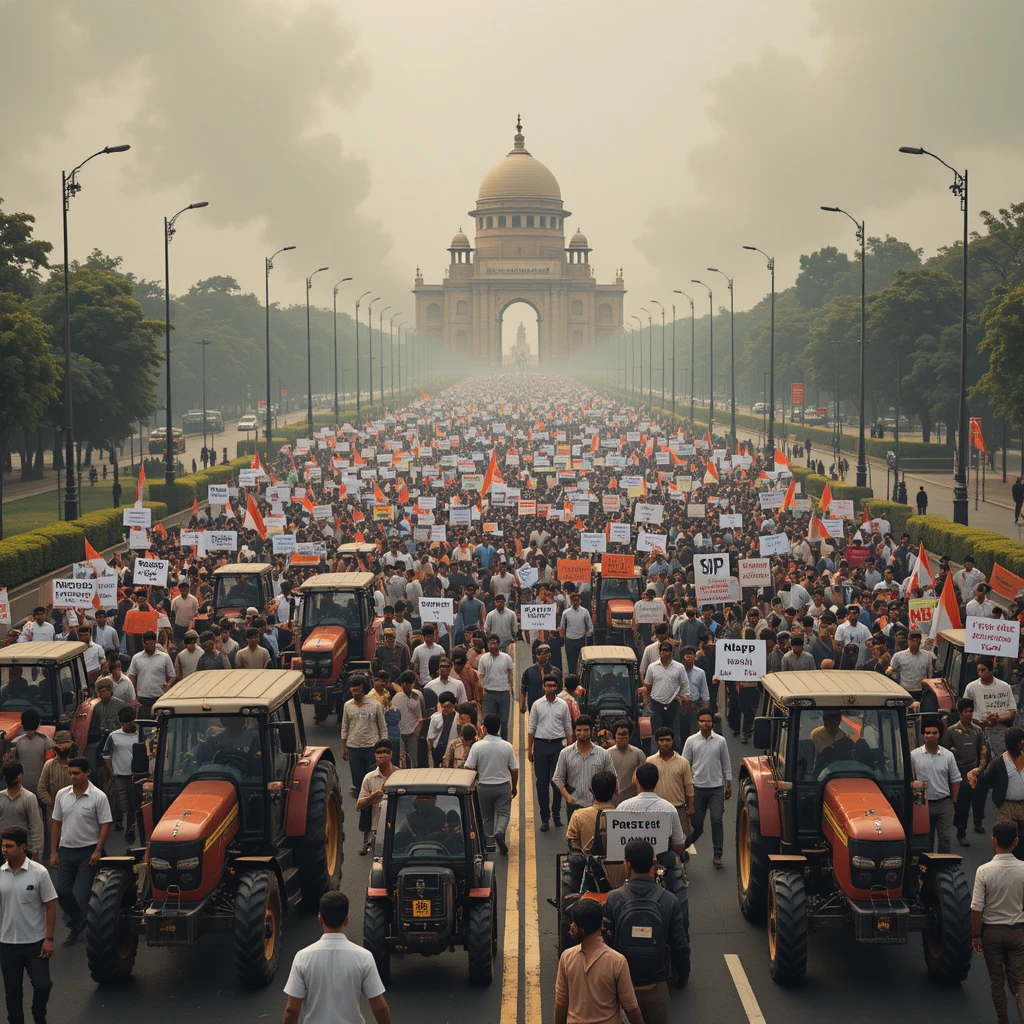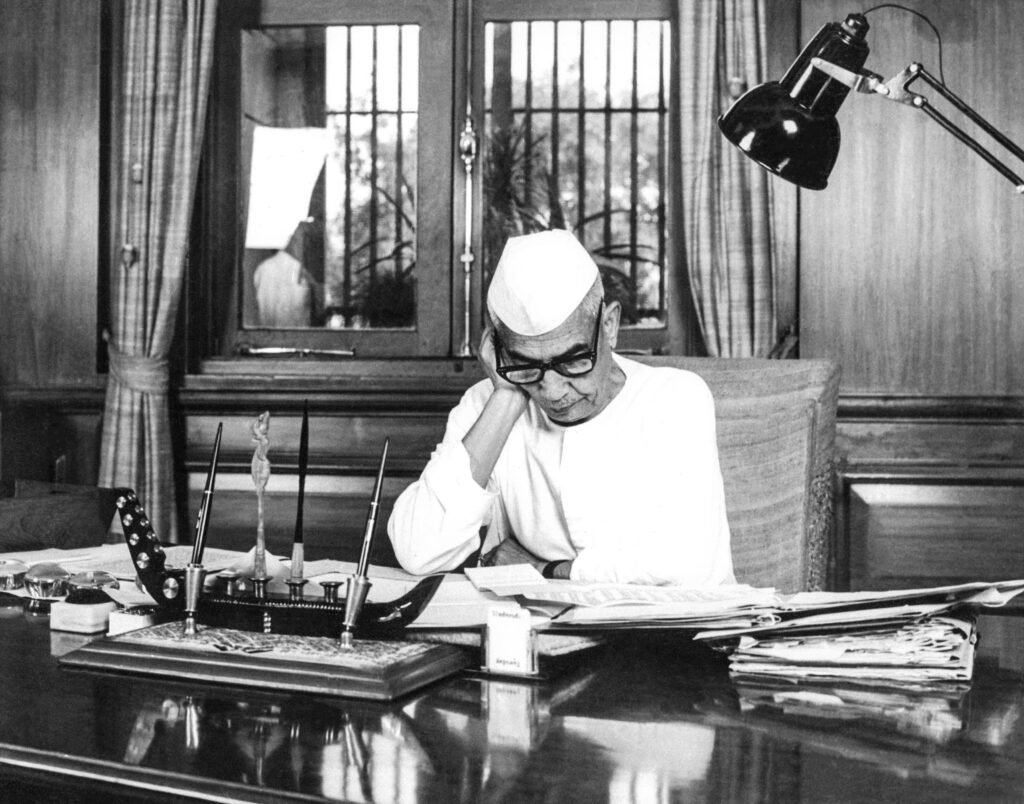Dead Economy-As of August 2025, India stands at a critical juncture. Heralded as the world’s fastest-growing major economy, with GDP projections of 6.4% to 6.7% for FY 2025-26, it boasts robust macroeconomic indicators: record foreign exchange reserves of $670.1 billion, inflation at a historic low of 2.82%, and extreme poverty reduced to 2.3% by 2022-23. Yet, beneath this veneer of progress lies a cauldron of discontent. Farmers block highways demanding minimum support prices (MSP), students protest against exam scams like NEET and Vyapam, employees strike for pension reforms, and journalists face imprisonment for exposing government failures. Wealth inequality is stark, with the top 1% holding 58% of national wealth, while policies like demonetization, GST, and COVID lockdowns have devastated small businesses and rural livelihoods. Institutional overreach—such as overriding Supreme Court rulings and delaying opposition bills—further erodes trust. This article, spanning over 4,000 words, examines whether these government actions have created a ‘dead economy’ or a deeply divided one, drawing on data from the IMF, World Bank, Oxfam, RBI, CMIE, and recent developments like mid-day meal lapses and journalist arrests in cases like Hathras.

Table of Contents
Macroeconomic Resilience Amid Structural Flaws
India’s economic growth remains a global standout. The IMF projects 6.4% real GDP growth for 2025-26, driven by strong domestic demand, infrastructure investments, and a manufacturing boom of 9.9%. The World Bank forecasts 7% for FY24/25, supported by real estate and export diversification targeting $1 trillion in merchandise by 2030. Foreign exchange reserves peaked at $670.1 billion in August 2024, bolstering resilience against global shocks. Inflation, at 2.82% in May 2025, reflects monetary stability, while poverty reduction to 2.3% signals progress.

However, these figures conceal deep vulnerabilities. Urban youth unemployment stands at 18.8% (June 2025), with overall rates at 5.6%, figures over 70% of economists question due to underreporting in the informal sector. CMIE data indicates unemployment spiked to 9.2% in June 2024 before stabilizing, with youth rates at 13.8%. Wealth inequality is extreme: Oxfam reports the top 1% hold 58% of wealth, and the top 10% control 77%, with a wealth Gini coefficient of 0.75. Income inequality has worsened, with the Gini rising from 52 in 2004 to 62 in 2023. Child malnutrition persists at 35.5%, undermining human capital. These disparities, coupled with policies favoring corporates, fuel perceptions of an elitist economy, driving protests that disrupt supply chains and investor confidence.
Widespread Protests: A Cry Against Systemic Neglect
Protests in 2025 reflect deep-seated grievances across sectors, signaling systemic failures rather than economic collapse.
Farmers’ Protests: A Fight for Survival
Since 2020, farmers have protested against policies perceived as pro-corporate, initially targeting three farm laws (repealed in 2021) that threatened MSP and favored agribusiness. In 2025, demands include legal MSP guarantees at 50% above production costs, loan waivers, and climate resilience measures. Clashes in Punjab and Haryana, involving millions, have seen police brutality and internet shutdowns, condemned by Human Rights Watch. In August 2025, protests against an India-US trade deal are planned, with leaders like Jagjit Singh Dallewal ending a 130-day hunger strike. Agrarian distress, worsened by falling incomes and climate risks, disrupts supply chains but underscores the need for structural reforms to prevent corporate monopolies.

Students’ Protests: A Broken Education System
The education sector is in turmoil, with scams eroding trust. The NEET-UG 2024 paper leak affected 3 million aspirants, prompting CBI probes and arrests, including mastermind Sanjeev Mukhiya in April 2025. Echoing the Vyapam scam (2015), where rigged exams led to 33 mysterious deaths, recent SSC delays have sparked outrage in Delhi and Bihar. Protests, often met with force, demand transparency and reforms. These scandals exacerbate unemployment, as qualified youth face barriers, undermining India’s demographic dividend.
Labor and Union Strikes: Demanding Dignity
Employees and unions, rallying for the Old Pension Scheme (OPS) over the market-linked New Pension Scheme, staged a Bharat Bandh in July 2025, involving 25 crore workers. Demands include a INR 26,000 minimum wage and ILO convention ratification. Layoffs in tech and manufacturing, coupled with privatization fears, fuel unrest. These strikes, while costly, highlight insecure jobs and inadequate wages, with contract-based hiring replacing permanent posts.
Unemployment and Education Decline: A Looming Crisis
Unemployment remains a flashpoint. CMIE reports urban unemployment at 7.1% and youth (15-29) at 13.8% in June 2025. Over 1 million government posts remain vacant, despite 82,747 openings announced in 2025. Exam cancellations and terminations, particularly in railways, have sparked protests, often violently suppressed. Education quality has plummeted, with literacy gaps and scams undermining meritocracy. The Mid-Day Meal Scheme, intended to combat malnutrition, exemplifies implementation failures. In July 2024, Chhattisgarh students received rice with turmeric and salt for a month. Similar cases in Ayodhya (2022) and Uttar Pradesh (2019) involved roti with salt, with officials suspended but systemic issues unresolved. In 2025, Maharashtra cut funding for eggs and sugar, forcing schools to seek donations. Samples from 11 states failed nutrition norms, with corruption rife, perpetuating hunger and stunting economic potential.
Wealth Disparities: The 1% vs. the Rest
India’s wealth concentration is staggering: the top 1% earn 2,800 times more than the bottom 50%, with inequality rising since liberalization. The national minimum wage, at INR 178/day, is insufficient, with gender pay gaps and working poverty persistent. The government’s 2025 living wage plan, aligned with ILO standards, aims to cover essentials like housing and education, but implementation lags. Schemes like 5kg free grain provide relief, but critics note minimal cash transfers, leaving the poor cash-strapped. Corporate loan write-offs, totaling Rs 16.35 lakh crore over a decade, contrast sharply with rural neglect, fueling perceptions of cronyism.
Policy Missteps: Demonetization, GST, and COVID Lockdowns
Government policies have often backfired, disproportionately harming the poor. Demonetization (2016) caused 1.5 million job losses and shuttered 60% of MSMEs, with 47% revenue drops. GST (2017), while streamlining taxes, increased compliance costs, further crippling small businesses. COVID lockdowns triggered mass migration of 43.3 million, with 198 deaths on roads and informal sector collapse. MGNREGA, promising 100 days of rural work, averaged 44 days in 2025 due to budget cuts, down from 50 in prior years, leaving rural economies vulnerable.
Institutional Erosion: Undermining Democratic Norms
Government actions have strained democratic institutions. In 2023, an ordinance overrode a Supreme Court ruling on Election Commission appointments, replacing the CJI with a PM-appointee, drawing SC scrutiny in 2025. Governors in opposition states like Tamil Nadu delayed bills, prompting SC to mandate 1-3 month timelines in April 2025. Lt. Governor interference in Delhi escalated tensions, with cases withdrawn post-BJP’s 2025 win. These moves, alongside loan write-offs, deepen distrust in governance.
Suppression of Press Freedom: Silencing Accountability
Press freedom has plummeted, with India at 151 in the 2025 World Press Freedom Index. Journalists face arrests for exposing failures, particularly in BJP-ruled states, where probes into minority crimes are lax. The Hathras case (2020), involving a Dalit girl’s rape-murder, saw journalist Siddique Kappan arrested under UAPA, detained over two years until 2023. In 2025, X blocked 2,355 accounts amid protests, raising censorship concerns. Journalists covering mid-day meal lapses or COVID mishandling face crackdowns, stifling accountability and perpetuating opacity.
Conclusion: A Divided, Not Dead, Economy
India’s economy is far from ‘dead,’ with 6.4-7% growth defying stagnation. Yet, policies have deepened divides: unemployment, inequality, and unrest threaten stability. Protests, mid-day meal failures, and journalist arrests reflect neglect of the marginalized. Urgent reforms—living wages, full MGNREGA implementation, transparent exams, and press protections—are critical to harness India’s potential. Without them, the ‘dead economy’ narrative, though exaggerated, underscores a crisis of equity and trust that demands immediate action.
References:
- IMF, World Bank, Oxfam, RBI, CMIE reports (2023-2025).
- Human Rights Watch on farmers’ protests (2024).
- CBI chargesheets on NEET-UG (2025).
- SC rulings on Election Commission and governors (2023-2025).
- Press Freedom Index (2025).
- Hathras case and journalist arrests (2020-2023).
- Mid-day meal reports (2019-2025).


